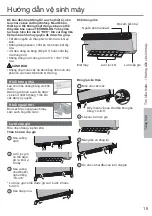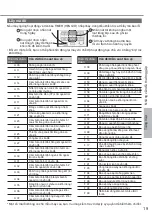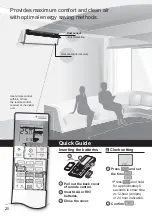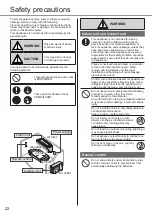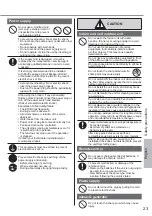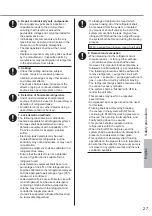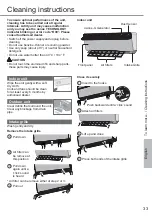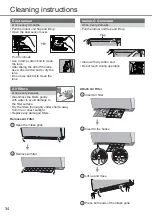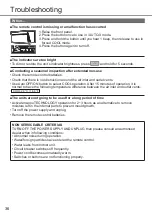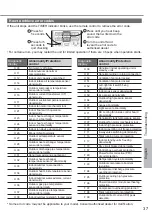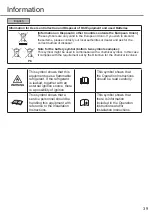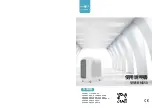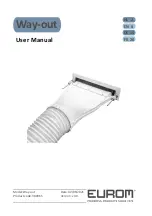
28
Safety precautions
e) If a vacuum is not possible, make a
manifold so that refrigerant can be
removed from various parts of the system.
f) Make sure that cylinder is situated on the
scales before recovery takes place.
g) Start the recovery machine and operate
in accordance with manufacturer’s
instructions.
h) Do not over
fi
ll cylinders. (No more than
80 % volume liquid charge).
i) Do not exceed the maximum working
pressure of the cylinder, even temporarily.
j) When the cylinders have been
fi
lled
correctly and the process completed, make
sure that the cylinders and the equipment
are removed from site promptly and all
isolation valves on the equipment are
closed off.
k) Recovered refrigerant shall not be charged
into another refrigeration system unless it
has been cleaned and checked.
• Electrostatic charge may accumulate and
create a hazardous condition when charging
or discharging the refrigerant. To avoid
fi
re or
explosion, dissipate static electricity during
transfer by grounding and bonding containers
and equipment before charging/discharging.
11. Labelling
• Equipment shall be labelled stating that it
has been de-commissioned and emptied of
refrigerant.
• The label shall be dated and signed.
• Ensure that there are labels on the equipment
stating the equipment contains
fl
ammable
refrigerant.
12. Recovery
• When removing refrigerant from a system,
either for servicing or decommissioning,
it is recommended good practice that all
refrigerants are removed safely.
• When transferring refrigerant into cylinders,
ensure that only appropriate refrigerant
recovery cylinders are employed.
• Ensure that the correct number of cylinders
for holding the total system charge are
available.
• All cylinders to be used are designated for
the recovered refrigerant and labelled for
that refrigerant (i.e. special cylinders for the
recovery of refrigerant).
• Cylinders shall be complete with pressure
relief valve and associated shut-off valves in
good working order.
• Recovery cylinders are evacuated and, if
possible, cooled before recovery occurs.
9. Charging procedures
• In addition to conventional charging
procedures, the following requirements shall
be followed.
- Ensure that contamination of different
refrigerants does not occur when using
charging equipment.
- Hoses or lines shall be as short as possible
to minimize the amount of refrigerant
contained in them.
- Cylinders shall be kept upright.
- Ensure that the refrigeration system is
earthed prior to charging the system with
refrigerant.
- Label the system when charging is
complete (if not already).
- Extreme care shall be taken not to over
fi
ll
the refrigeration system.
• Prior to recharging the system it shall be
pressure tested with OFN (refer to #7).
• The system shall be leak tested on completion
of charging but prior to commissioning.
• A follow up leak test shall be carried out prior
to leaving the site.
• Electrostatic charge may accumulate and
create a hazardous condition when charging
and discharging the refrigerant. To avoid
fi
re
or explosion, dissipate static electricity during
transfer by grounding and bonding containers
and equipment before charging/discharging.
10. Decommissioning
• Before carrying out this procedure, it is
essential that the technician is completely
familiar with the equipment and all its details.
• It is recommended good practice that all
refrigerants are recovered safely.
• Prior to the task being carried out, an oil
and refrigerant sample shall be taken in
case analysis is required prior to re-use of
reclaimed refrigerant.
• It is essential that electrical power is available
before the task is commenced.
a) Become familiar with the equipment and
its operation.
b) Isolate system electrically.
c) Before attempting the procedure ensure
that:
• mechanical handling equipment is
available, if required, for handling
refrigerant cylinders;
• all personal protective equipment is
available and being used correctly;
• the recovery process is supervised at all
times by a competent person;
• recovery equipment and cylinders conform
to the appropriate standards.
d) Pump down refrigerant system, if possible.


